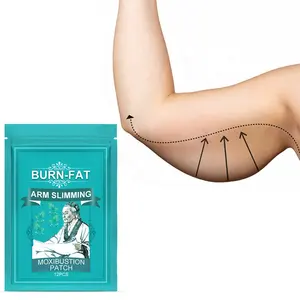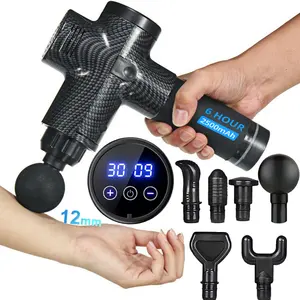Phổ biến trong ngành của bạn






Hướng dẫn sử dụng tùy chỉnh thiết kế tay máy ép bền tái sử dụng nút máy làm cho các cửa hàng may mặc
60,00 US$ - 70,00 US$
Đơn hàng tối thiểu: 1 Bộ





Máy Đục Lỗ Bằng Tay, Máy Đục Lỗ Bằng Tay
Sẵn sàng vận chuyển
700,00 US$
Đơn hàng tối thiểu: 1 Cái
Vận chuyển mỗi chiếc: 311,39 US$







Chất lượng cao tay máy ép tiết kiệm thời gian và năng lượng tay Báo Chí Snap Nút máy
60,00 US$ - 70,00 US$
Đơn hàng tối thiểu: 1 Bộ







Mô hình nhỏ của 25 tấn điện Báo Chí giá rẻ Tốc độ nhanh 25 tấn Máy Đục Lỗ
1.550,00 US$ - 1.650,00 US$
Đơn hàng tối thiểu: 1 Bộ







Thương Mại 12Cm 16Cm 20Cm/22Cm/24Cm Bánh Pizza Bột Cán Máy Tay Hoạt Động Của Nhãn Hiệu Bánh Pizza Bột Làm Máy Ép
Sẵn sàng vận chuyển
45,00 US$
Đơn hàng tối thiểu: 1 Bộ
Vận chuyển mỗi chiếc: 40,97 US$






Trung Quốc J03 Bằng Sáng Chế Chính Xác Arbor Báo Chí Nhỏ Tay Máy Ép Với Báo Chí Mạnh Mẽ
Sẵn sàng vận chuyển
59,70 US$
Đơn hàng tối thiểu: 1 Bộ
Vận chuyển mỗi chiếc: 92,50 US$






Thương mại 18/25/36cm Tay bánh pizza bột máy ép/tay tay bánh pizza bột dẹt Máy ép
78,00 US$ - 390,00 US$
Đơn hàng tối thiểu: 1 Bộ
- 11%






Bán Tự Động Tay Bấm Lỗ Giày Máy PVC Flex Banner Lỗ Gắn Máy Đục Lỗ
Sẵn sàng vận chuyển
84,10 US$ - 96,12 US$
Đơn hàng tối thiểu: 1 Bộ
Vận chuyển mỗi chiếc: 49,64 US$




Bán Buôn Chất Lượng Cao Tùy Chỉnh Tay Báo Chí Grommets Bán Hot Manual Lỗ Gắn Máy Cho Túi Xách
Sẵn sàng vận chuyển
28,00 US$ - 42,00 US$
Đơn hàng tối thiểu: 1 Cái
Vận chuyển mỗi chiếc: 47,50 US$






Hướng Dẫn Sử Dụng Tay Máy Ép/Nhựa Snap Nút Tay Máy Ép/Snap Nút Máy Cầm Tay
15,00 US$ - 25,00 US$
Đơn hàng tối thiểu: 1 Bộ



Thương mại tay bánh Pizza bột Báo Chí máy/Manual tay bánh Pizza bột dẹt Báo Chí
25,00 US$ - 77,00 US$
Đơn hàng tối thiểu: 1 Cái

















Nhà Máy Trực Tiếp Bán Giá Rẻ Kích Thước Nhỏ Áp Lực Tay Ramen Mì Ăn Liền Máy Đùn/Nhãn Hiệu Kéo Mì Mồi Mì Máy
30,00 US$ - 85,00 US$
Đơn hàng tối thiểu: 1 Bộ






6/8/9/14inch tay bánh Pizza bột máy ép/tay tay bánh pizza bột dẹt Máy ép
80,00 US$
Đơn hàng tối thiểu: 1 Bộ





Hướng Dẫn Sử Dụng Hand Press Disc Cutter Máy Cho Phòng Thí Nghiệm Đồng Xu Di Động Điện Cực Đấm
650,00 US$
Đơn hàng tối thiểu: 1 Bộ


Katkitchen mì pasta báo chí nhà sản xuất máy máy cầm tay mỗi mì ống fresca
6,00 US$ - 12,00 US$
Đơn hàng tối thiểu: 5 Bộ






36cm có thể điều chỉnh độ dày thương mại tay bánh Pizza bột Máy ép/Hướng dẫn sử dụng tay bánh pizza bột dẹt Báo Chí
90,00 US$ - 120,00 US$
Đơn hàng tối thiểu: 1 Bộ






Guanfeng Giá Tốt Nhất Của Nhãn Hiệu Nhỏ Máy Đục Lỗ Rèm Vòng Lỗ Gắn Nút Snap Đinh Tán Tay Bấm Lỗ Gắn Máy
Sẵn sàng vận chuyển
15,00 US$ - 16,00 US$
Đơn hàng tối thiểu: 1 Bộ
Vận chuyển mỗi chiếc: 26,79 US$






Máy Ép Bột Làm Bánh Pizza Bằng Tay Bán Chạy 2017 Máy Ép Pizza
200,00 US$ - 600,00 US$
Đơn hàng tối thiểu: 1 Bộ






Chất Lượng Cao Bán Buôn Tay Báo Chí Bán Tự Động Grommet Lỗ Gắn Máy
Sẵn sàng vận chuyển
100,00 US$
Đơn hàng tối thiểu: 1 Cái
Vận chuyển mỗi chiếc: 104,01 US$






Bán Tự Động/Tự Động Lỗ Gắn Tay Báo Chí Banner Grommet Máy
20,00 US$ - 108,00 US$
Đơn hàng tối thiểu: 1 Bộ






Arbor Báo Chí Tay Arbor Báo Chí/Hướng Dẫn Sử Dụng Arbor Báo Chí/Arbor Báo Chí Máy
Sẵn sàng vận chuyển
153,86 US$
Đơn hàng tối thiểu: 1 Bộ
Vận chuyển mỗi chiếc: 346,04 US$






Máy Ép Bột Pizza Bằng Tay/Máy Ép Bột Làm Bánh Pizza Bằng Tay
75,00 US$ - 320,00 US$
Đơn hàng tối thiểu: 1 Bộ



ARBOR Bấm Tay/Bằng Tay ARBOR Báo Chí/ARBOR Máy Ép
Sẵn sàng vận chuyển
700,00 US$
Đơn hàng tối thiểu: 1 Cái
Vận chuyển mỗi chiếc: 311,44 US$










Tháng Bảy Tay Arbor Báo Chí Dập Nổi Máy Made Chất Lượng Tốt 0-160 KG Máy Đục Lỗ Hướng Dẫn Sử Dụng Báo Chí Mang Tay Loại 20-170 Mét 64 Mét
180,00 US$ - 220,00 US$
Đơn hàng tối thiểu: 1 Bộ












Máy Bấm Lỗ Bằng Tay Vải Bạt Thủ Công 10Mm Máy Bấm Lỗ Bằng Tay Biểu Ngữ Mềm Máy Đục Lỗ Máy Đục Lỗ
12,90 US$ - 14,90 US$
Đơn hàng tối thiểu: 1 Cái







Hướng Dẫn Sử Dụng Máy Ép Thủy Lực HP-100S Hướng Dẫn Sử Dụng Máy Ép Tay Thủy Lực
2.090,00 US$ - 2.450,00 US$
Đơn hàng tối thiểu: 1 Bộ






Cnc 10 T Thủy Lực Tay Máy Ép Tay Máy Ép Thủy Lực 10 Tấn Cơ Khí Báo Chí
8.000,00 US$ - 15.000,00 US$
Đơn hàng tối thiểu: 1 Bộ






Máy Ép Tay Thứ Hai Thủy Lực Với Giá Cả Cạnh Tranh
6.850,00 US$ - 6.900,00 US$
Đơn hàng tối thiểu: 1 Bộ






Hướng Dẫn Sử Dụng CR80 Giấy Ảnh Thẻ Kinh Doanh Hand Press Die Cutter Máy
100,00 US$
Đơn hàng tối thiểu: 2 Bộ






Eyeleting Máy Hướng Dẫn Sử Dụng Lỗ Gắn Puncher Tay Máy Ép
15,00 US$ - 18,00 US$
Đơn hàng tối thiểu: 200 Cái






Các danh mục hàng đầu
Giới thiệu về máy ép tay
Ngày nay, máy ép tay không còn là điều mới mẻ đối với những người bình thường và không còn bị coi là điều cấm kỵ khi sử dụng. Nếu bạn đang tìm kiếm niềm vui áp chót đó, bạn phải kiểm tra sự bao la. Bộ sưu tập máy ép tay tại Alibaba.com. Những gợi cảm và cong. máy ép tay đáng giá từng xu và chắc chắn làm cho đêm đó trở nên đặc biệt đối với bạn. Những con búp bê này có ngoại hình giống như thật, bắt đầu từ tóc đến ngón chân theo mọi nghĩa.
Cho dù bạn là một người cô đơn đang tìm kiếm một người bạn đời như cuộc sống hay một cặp vợ chồng muốn thêm gia vị cho cuộc sống của họ, bạn đều có thể sử dụng chúng . máy ép tay để đốt cháy ngọn lửa đó. Những ngoạn mục. máy ép tay có thể tùy chỉnh theo mong đợi của bạn. Những điều tuyệt vời. máy ép tay có sẵn ở cả phiên bản dành cho nam và nữ và được làm từ silicone cấp y tế để sử dụng an toàn. Hãy sở hữu ngay bây giờ và tận hưởng một đêm đam mê và cháy bỏng.
Alibaba.com cung cấp những điều tuyệt vời này. máy ép tay ở mọi hình dạng cơ thể, kích thước và sắc tộc. Dù yêu cầu của bạn đối với. máy ép tay, bạn có thể tải tất cả chúng trên trang web. Những cái này. máy ép tay được tạo hình bởi những người thợ thủ công giỏi nhất và mọi chi tiết phức tạp đều được kiểm tra kỹ lưỡng. Những con búp bê này có mắt, tóc, móng tay và tất cả các bộ phận cơ thể khác tương tự như người thật.
Alibaba.com cung cấp nhiều loại. máy ép tay có thể giúp bạn mua các sản phẩm phù hợp với ngân sách và các yêu cầu khác của bạn. Các sản phẩm này an toàn để sử dụng, được chứng nhận và thân thiện với môi trường trong tự nhiên. Đơn đặt hàng OEM có sẵn trên các sản phẩm này.
Cho dù bạn là một người cô đơn đang tìm kiếm một người bạn đời như cuộc sống hay một cặp vợ chồng muốn thêm gia vị cho cuộc sống của họ, bạn đều có thể sử dụng chúng . máy ép tay để đốt cháy ngọn lửa đó. Những ngoạn mục. máy ép tay có thể tùy chỉnh theo mong đợi của bạn. Những điều tuyệt vời. máy ép tay có sẵn ở cả phiên bản dành cho nam và nữ và được làm từ silicone cấp y tế để sử dụng an toàn. Hãy sở hữu ngay bây giờ và tận hưởng một đêm đam mê và cháy bỏng.
Alibaba.com cung cấp những điều tuyệt vời này. máy ép tay ở mọi hình dạng cơ thể, kích thước và sắc tộc. Dù yêu cầu của bạn đối với. máy ép tay, bạn có thể tải tất cả chúng trên trang web. Những cái này. máy ép tay được tạo hình bởi những người thợ thủ công giỏi nhất và mọi chi tiết phức tạp đều được kiểm tra kỹ lưỡng. Những con búp bê này có mắt, tóc, móng tay và tất cả các bộ phận cơ thể khác tương tự như người thật.
Alibaba.com cung cấp nhiều loại. máy ép tay có thể giúp bạn mua các sản phẩm phù hợp với ngân sách và các yêu cầu khác của bạn. Các sản phẩm này an toàn để sử dụng, được chứng nhận và thân thiện với môi trường trong tự nhiên. Đơn đặt hàng OEM có sẵn trên các sản phẩm này.





















